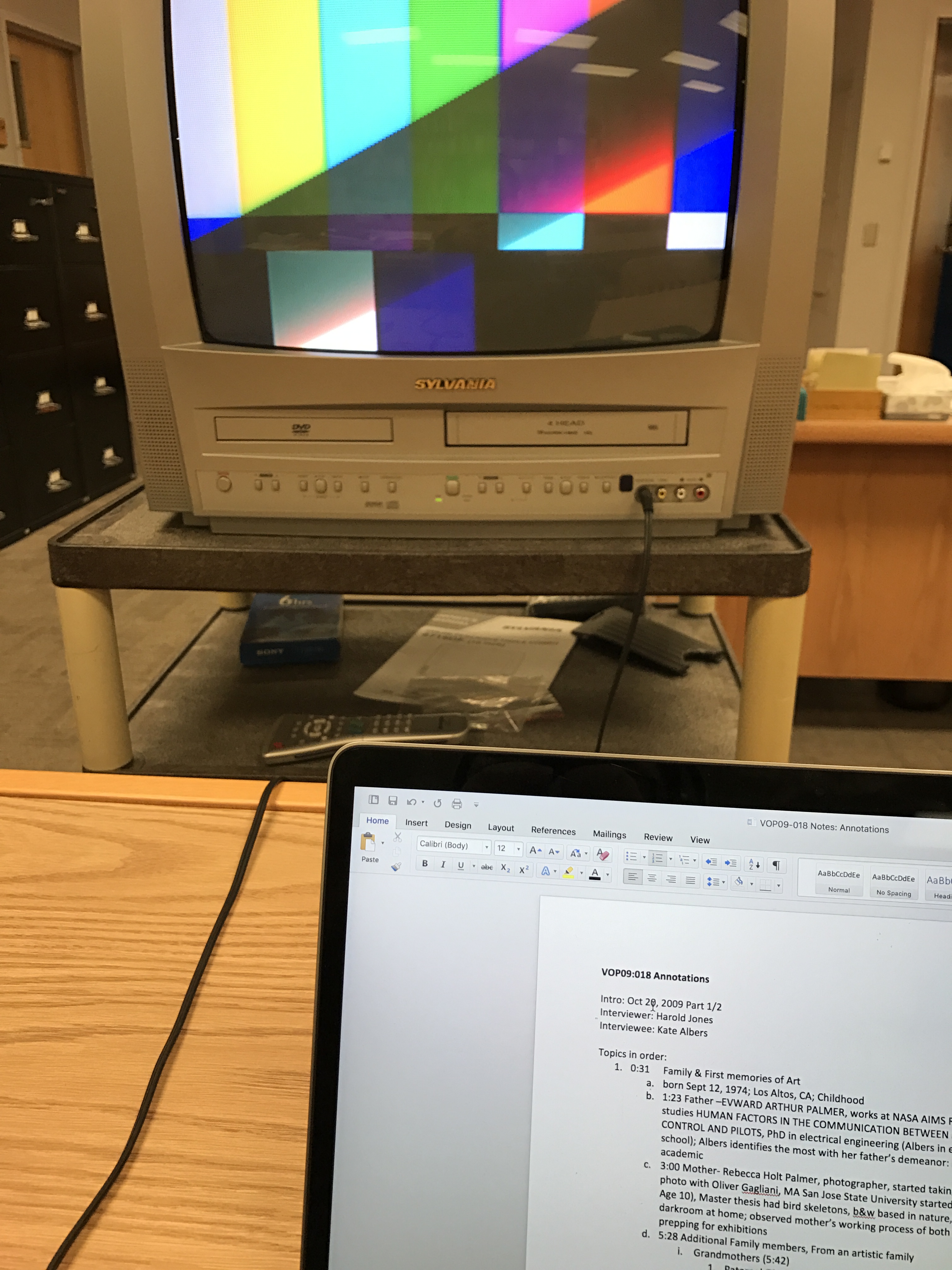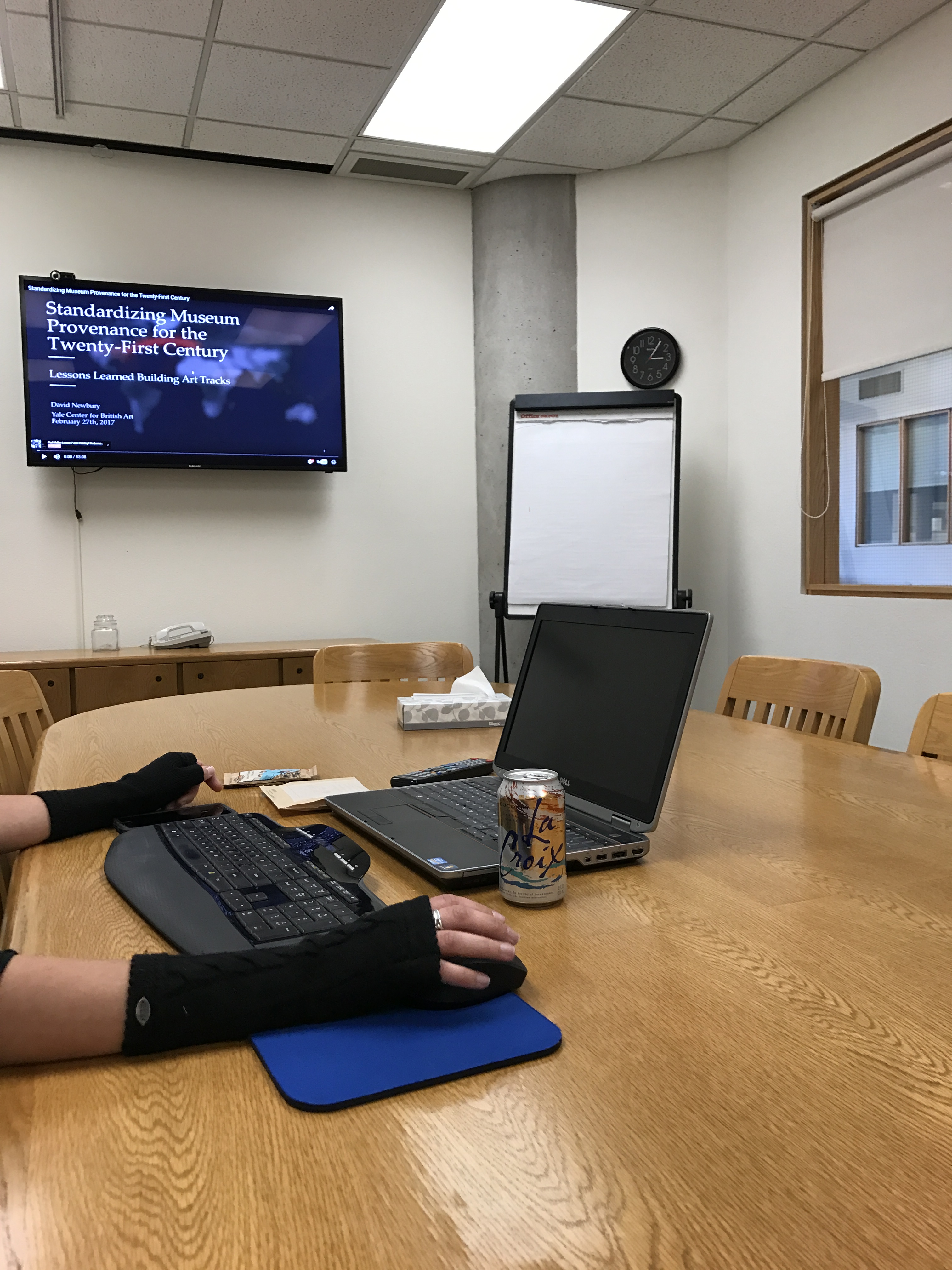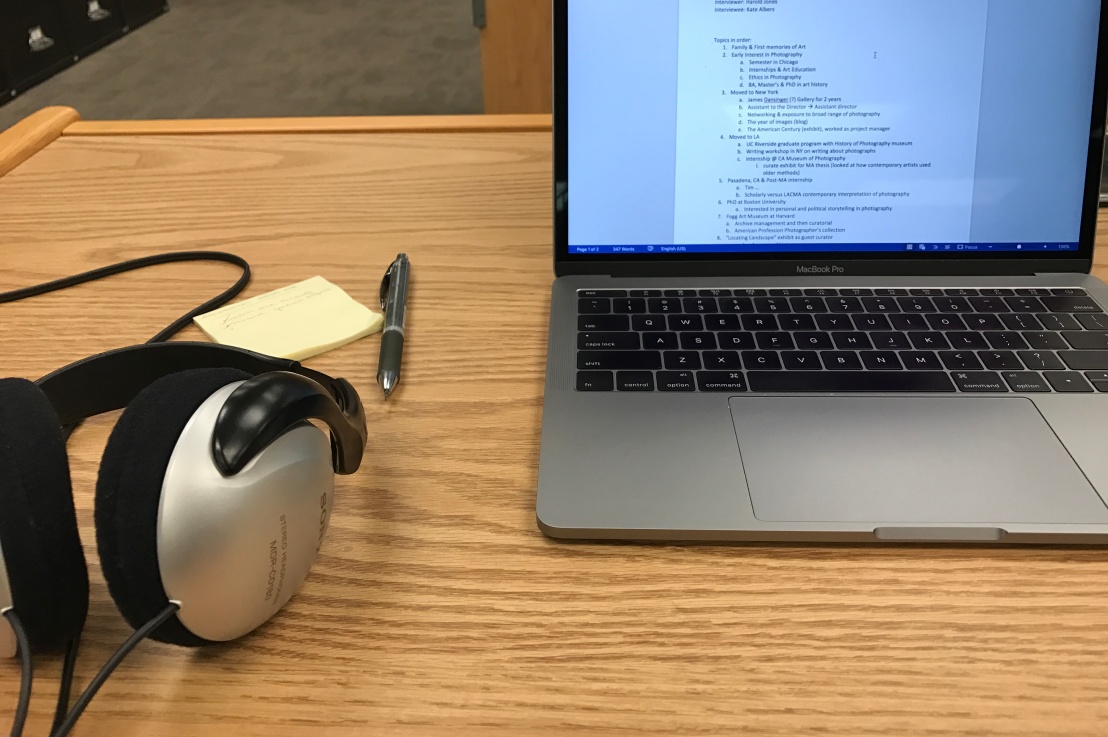This week I started my annotation of an interview of Kate Albers for the Voices Of Photography archive. She’s currently a professor at the UA and I actually got to meet her when Jae gave a talk about W Eugene Smith’s unpublished Big Book for a mixed level history of photography class. Besides showing the Big Book to Dr Albers’ class, Jae and I went over what a conservation portfolio should include pre-program, post-program, and then professionally. It was really interesting and I realized that internships are so important in this field.

This is my setup in the Volkerding Study Center. I promise the entire video doesn’t look like what’s on the screen above. One of the things I found most fascinating about Dr Albers is her variety of experience in both commercial and educational curation. She worked at the James Danziger Gallery in New York and gained experience with finding photographs with the intent to sell them. Then after moving from NY to LA for her Master’s program at UC Riverside, she started to work in the museum setting where the intent is for the public scholarship rather than profit. Hearing her talk about that transition was really interesting for me because for some reason I haven’t consciously identified the difference in what a gallery’s versus a museum’s purpose might be and this just provoked another mindset for me.

Also this week I attended this webinar meeting, which can be watched here https://www.youtube.com/watch?v=YKJqINwZ–o, about how and why museums establish provenance. It was really interesting to watch as I have read about museum ethics before and provenance (a record of ownership of a work of art or an antique, used as a guide to authenticity or quality) was something I didn’t have enough knowledge about the interworking of archives to understand to the fullest extent. So webinar is about a in-progress program that would allow researchers to look at a standardized and interactive provenance document. The idea is basically that you can search for a specific painting and get the list of owners with dates as well as a timeline using that information. With this kind of information, researchers could then piece together original collections. For example, let’s say that a church in Italy had a grand altarpiece way back when but now that altarpiece that was composed of 8 different pieces in split up into 8 different museums. This program would allow a researcher to see all 8 pieces together online instead of having to travel to 8 different museums and only getting to see one piece at a time. It’s an in progress concept…there’s a lot of coding involved which I don’t understand at all but it’s still pretty cool. One of the questions asked in the Q&A section that I found interesting addressed how difficult it would be to get institutions to release their provenance data to the public essentially. This is especially relevant in our era because museum ethics are becoming more and more under watch. For example, the art that was stolen by the Nazis from Jewish collectors. Shouldn’t that be returned? But if there is no living relative, who owns it? Or in terms of archaeological materials before regulations were put in place, can museums claim ownership over pottery that was looted from an excavation site? The answer is complicated. So you can get a sense of the debatable pros and cons of this program required provenance data and how museums might be hesitate to participate.
In other news, this was my last week with Jae before she started her new position as the Director at the Image Permanence Institute in Rochester, NY. I wish her the best of luck!


Fascinating! It is really amazing how much artwork in museums is actually “stolen”.
LikeLike